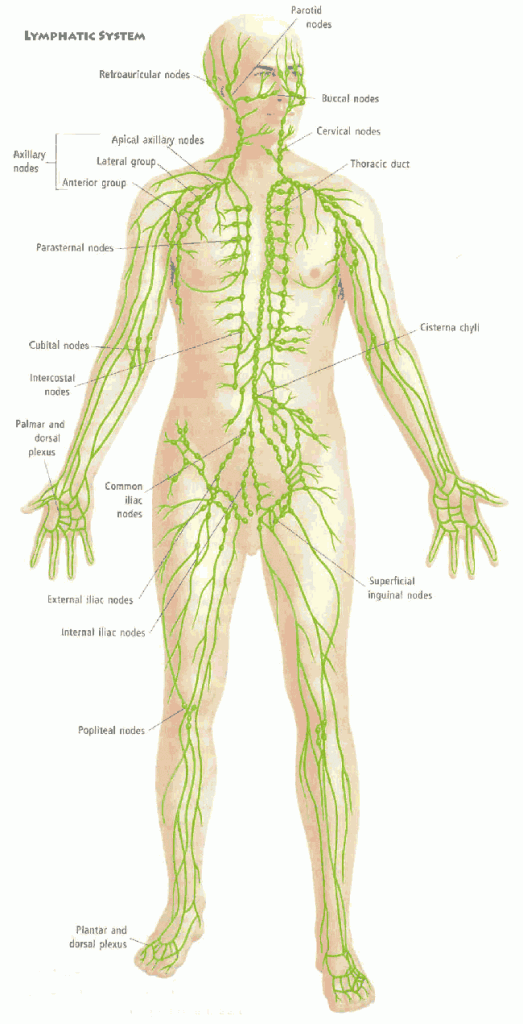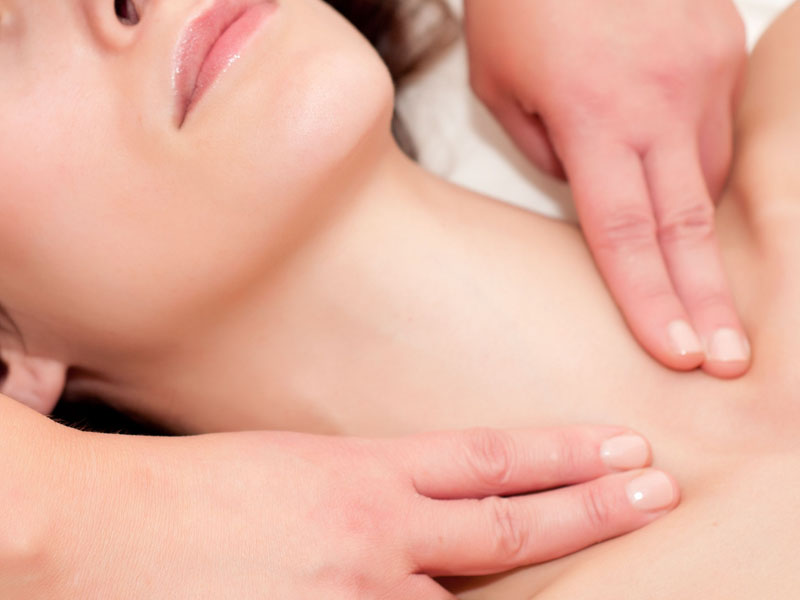
Soon after graduating from the Vancouver College of Massage Therapy I completed my lymphatic drainage (MLD) training at the Vodder School and Wittlinger Therapy Centre in Austria. During my RMT training in Vancouver, I completed the first level of the Vodder manual drainage course, and became interested in this gentle yet highly effective treatment method. Recently, I have been studying the Godoy and Godoy method developed in Brazil due to its strong base in research and applications post cosmetic surgery and in the treatment of cellulite. I have an interest in post cosmetic surgery treatment and I have done a lot research and have experience with lymphatic drainage applications post cosmetic surgery such as liposuction, facelift, tummy tuck, breast fat transfer and Brazilian butt lift (buttock fat transfer).
I chose to use MLD along with myofascial release to treat chronic tension headaches in my clinical case report as part of the RMTBC clinical case report competition with excellent results. My case report won second place and was published on the RMTBC site, where it can still be accessed:
https://www.rmtbc.ca/sites/default/files/files/Irina_Alexandov.pdf
Lymphatic drainage is a well known and frequently prescribed massage modality in Europe, but less so here in North America. My goal is help promote manual lymph drainage as part of my massage therapy practice in Vancouver, so that more patients can become aware of, and benefit from this treatment option.
What is the Lymphatic System?
The lymphatic system could be described as the body’s waste removal system. Its main function is to pick up and transport substances such as water, protein, fat cells, viruses, bacteria, lactic acid, dust and dyes from the intercellular spaces back to the venous system. The lymph nodes act as filtering stations playing an important role in the body’s immunity. In this way the lymphatic system maintains healthy connective tissue and helps the body get rid of bacteria, viruses and toxins.
What is Manual Lymph Drainage?
Manual lymph drainage (MLD) is a gentle, non-invasive manual technique that helps move stagnant lymph and stimulates the lymphatic system by increasing the amplitude and force of contraction of the lymph vessels, thus increasing lymph flow. Because the majority of the initial lymph vessels are directly under the skin gentle pressure is used to stretch the skin and in turn stimulate the lymphatics via their anchoring filaments. Deeper nodal pumping is used to stimulate areas with a high concentration of lymph nodes such as the inguinal area, the abdomen and the armpits. This approach seeks to intensify stimulation of both the deep and the superficial drainage systems in order to maximize the stimulation of the lymphatic system.
Lymphatic drainage was developed in the 1930’s by Danish biologist Dr. Emil Vodder and his wife Estrid. While working on the French Riviera Dr. Vodder noticed that patients with influenza symptoms improved with stimulation of the congested lymph nodes, and spent the next four years studying the lymphatic system and developing a manual method of lymphatic stimulation which he later presented at the world congress in Paris.
Over the years, other variations of lymphatic drainage have been developed , such as the Leduc method in Belgium, and more recently the Godoy and Godoy Lymph Drainage Therapy method in Brazil.
Manual lymph drainage can have the following effects on the body due to its application and the stimulation of lymph flow:
- Decreased pain – due to accelerated removal of pain chemicals from affected areas
- Calming of the sympathetic nervous system (induces relaxation) – due to the slow, rhythmical application
- Increased rates of healing due to stimulating our immune system – no research has been conducted in this area yet, but improved rates of healing have been observed in clinical practice
- Decreased edema – due to removal of excess fluid and inflammatory mediators from injured areas
- Maintenance of healthy connective tissue – due to maintaining optimal fluid balance in the loose connective tissue, removal of metabolic waste and damage causing foreign particles
